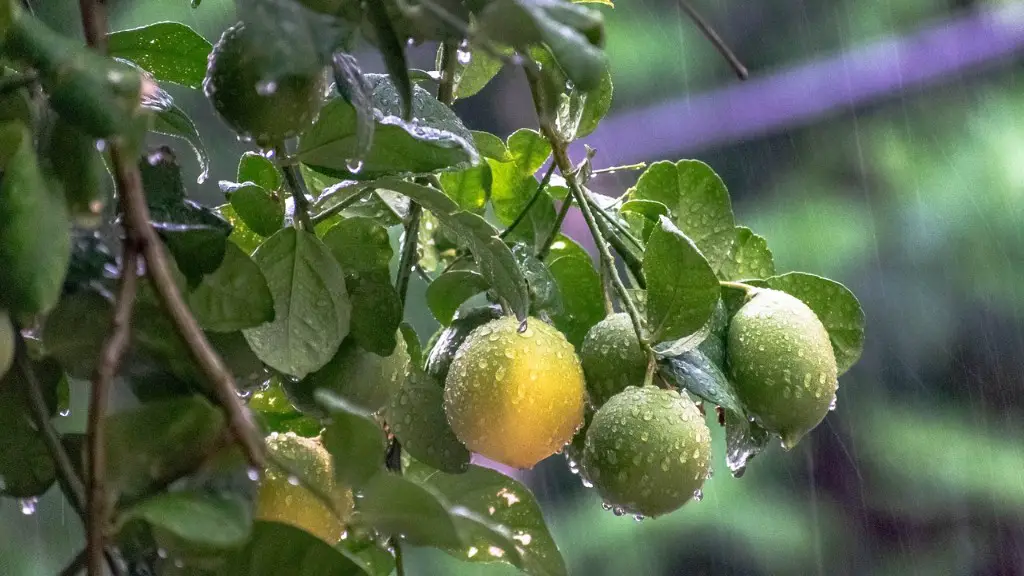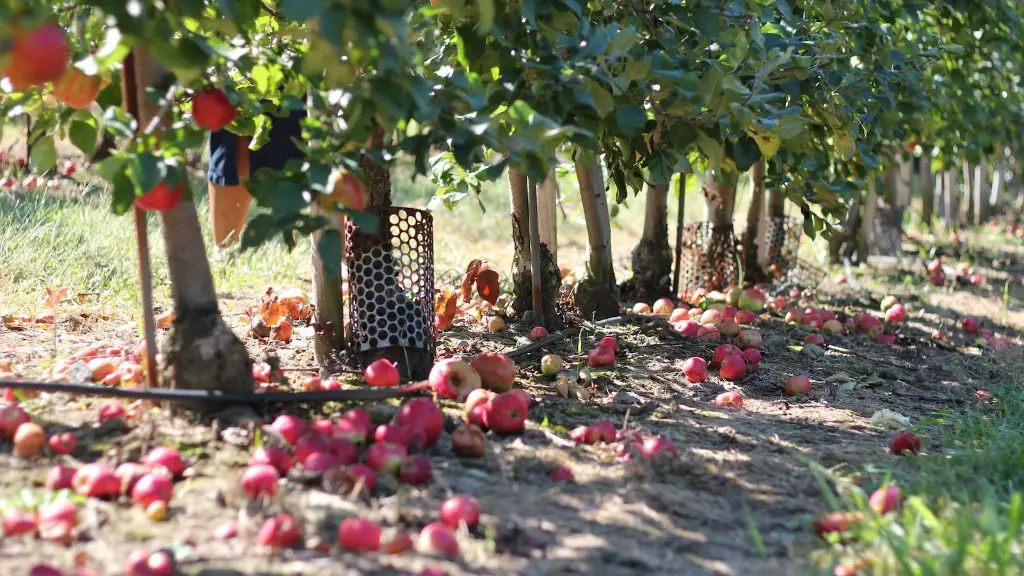In general, you should water your apple tree once a week. However, during hot, dry weather you may need to water twice a week.
The frequency of watering will depend on the climate, season, and size of the tree. A young tree will need to be watered more often than an established tree. During the hot summer months, apple trees will need to be watered every 7-10 days.
How often should I water my apple tree in the summer?
A bucket of water once a week is usually sufficient, but during hot weather or periods without rain, you may need to water every 2-3 days. Apply the water slowly so it soaks into the soil.
If you notice any wilting, curling, or turning brown near the tips and edges of the leaves on your trees, they may be in need of additional water.
Do apple trees take a lot of water
Apple trees need a regular supply of water in order to produce healthy fruit. However, they are quite resilient and can withstand periods of drought. During extended dry periods, you may need to water your tree about once a week.
Excess soil moisture can be a serious problem for trees. Without oxygen, tree roots can’t grow or absorb minerals, and leaves can turn yellow and die. In extreme cases, the entire tree can be killed. If you suspect your tree has a moisture problem, be sure to consult a professional.
What does an overwatered apple tree look like?
If you see any of the following signs, it’s likely that you are overwatering your plants:
– New growth withers before it’s fully grown
– Leaves become slightly yellow or green
– Leaves break easily
– Plants overall look fragile
The best time to water your tree is in the morning or evening. The roots will have a chance to absorb most of the water. Unfortunately, there’s no magic schedule for watering trees. How often you should water will depend on the size of your tree, soil conditions, and weather conditions.
How do you keep an apple tree healthy?
Apple trees are a beautiful and delicious addition to any landscape. With proper care, they can produce fruit for years to come.
Insect and disease control are essential to the health of the tree. Fungicide applications should be made in early spring and summer to prevent disease and produce healthy, high quality fruit.
Pruning is also an important part of apple tree care. Pruning helps keep the tree strong and healthy, and produces better fruit.
By following these simple steps, you can enjoy the beauty and bounty of your apple tree for years to come.
Watering your apples during dry spells is very important, especially if they are newly planted or in containers. The most effective way to do this for rows of fruit trees is to place a drip line or seep hose under the trees. Large, established trees will be more resistant to periods of drought.
How do you tell if a tree is overwatered or underwatered
If you find that the leaves on your trees are crispy and crunchy, it may be because they haven’t been watered enough. You can break off the crispy parts of the leaves if you make this mistake. If you are overwatering your trees, the leaves may be a bit gummy or wilted, though they will still be brown.
The best way to water a fruit tree is on a slow drip system. This can be accomplished through utilizing an irrigation system set-up to a timer, with things like drip emitters, soakers, or bubblers. The slow drip system allows the water to seep into the ground around the tree’s roots slowly, giving the tree the chance to absorb the water it needs without being overwhelmed.
When should you stop watering fruit trees?
During the cool months of October or November through winter and on into May, the fruit tree will need less water. Often, a fruit tree needs no irrigation water at all from December through March because of the cool temperatures and sufficient rainfall.
Drought tolerance is the plant’s ability to resist wilting and maintain its structural integrity and function when water is unavailable. Drought-tolerant plants have adapted to survive in arid or water-stressed environments.
Common fruit trees vary in their drought tolerance. Almonds, figs and olives are the most drought tolerant, while apples, cherries, apricots, pears and plums are somewhat drought tolerant. Nectarines, peaches and citrus need adequate water to survive.
Drought tolerance is an important consideration when selecting fruit trees for the home garden. Those in drier climates or who are facing water restrictions should choose drought-tolerant varieties to ensure a bountiful harvest.
Can a tree recover from overwatering
If your trees were waterlogged or flooded, it may take a few seasons for them to recover. Keep an eye on your trees and look for any continuing signs of distress. Many symptoms may not pop up until months later, especially if we have a prolonged hot, dry period.
To water your apple tree optimally, you should know its daily water use, or ET. ET is a measure of the water that evaporates from the leaves and transpires from the roots, and it varies depending on the weather. On a hot summer day, a large apple tree can use up to 50 gallons of water.
Do apple trees need full sun?
Apple trees need full sun and well-drained soil to produce the best fruit. The sun helps the tree to produce more fruit, and the well-drained soil helps to keep the tree healthy.
To test if a tree branch is still alive, lightly scratch away a small piece of bark from the trunk. The tissue behind the bark should be firm and green if the branch is healthy. If the tissue is brittle and cracks easily, the branch is likely dead.
Warp Up
The frequency of watering an apple tree depends on the climate, season, and size of the tree. In warm climates with little rainfall, apple trees may need to be watered every week or two. In cooler climates with more rainfall, apple trees may only need to be watered every few weeks.
The answer to this question depends on a number of factors, including the type of apple tree, the climate, and the time of year. In general, however, apple trees should be watered once a week, with more water during hot, dry periods.





